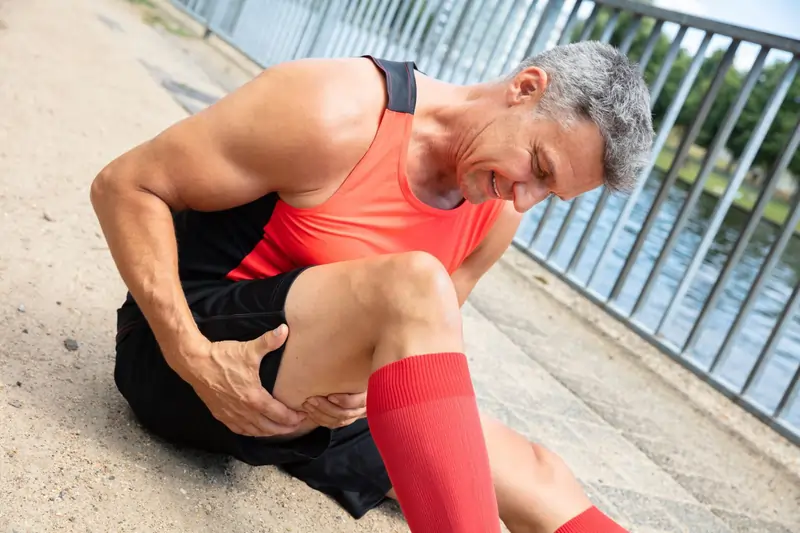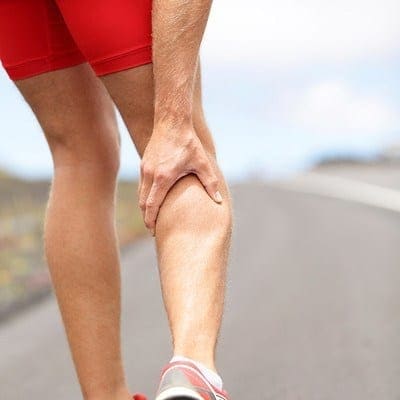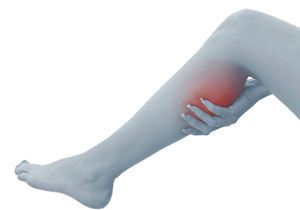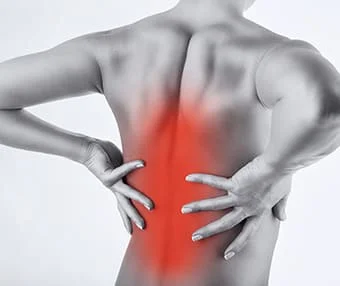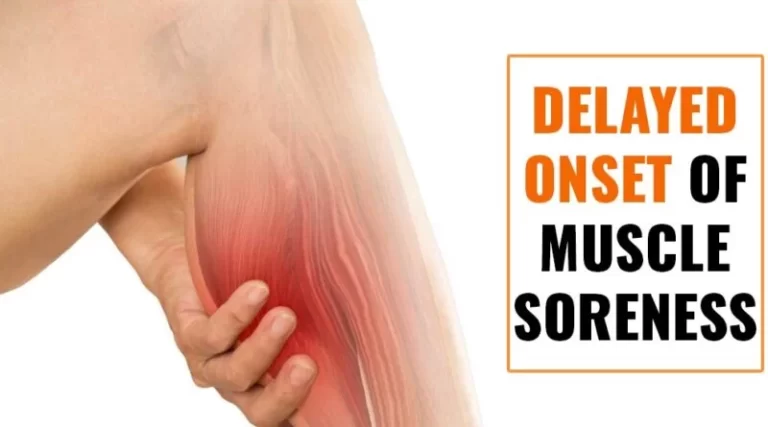Hamstring muscle soreness:
When you feel pain in the back side of the legs after a daily workout it is indicated as soreness in the hamstring muscle.
This muscle soreness is occur mostly due to the overuse of the hamstring muscle.
Sometimes this muscle soreness is lead to some serious conditions like as occur to muscle strain, micro-tears/larger tears in the muscle, & tendon rupture.
ThE hamstring muscle soreness is produced in pain with swellings, spasms & tenderness in the pain area.
This hamstring muscle soreness is released by to RICE principle, pain mediation & physiotherapy treatment.
Table of Contents
What is Hamstring muscle soreness?
- Hamstring muscle soreness is the most common symptom of overuse pain & spasm of hamstring muscles which are located at the back side of the thigh.
- When occur to the soreness you feel Aches & pains on the back of the legs, it is a sign of hamstring pain & injury.
- This Hamstring muscle is a group of muscles which is located on the back of the thighs.
- The most common cause of muscle soreness is an injury in the hamstring muscle.
- Hamstring muscles are very susceptible to injury, mostly in athletes who are doing to run & sprinting.
- After a workout, the hamstring muscle soreness is most common because it is injured many times.
What is the anatomy of the Hamstring muscle?
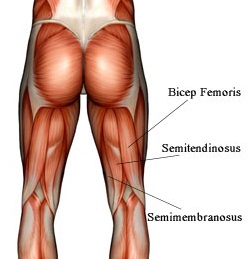
- These Hamstring muscles are part of the skeletal muscles.
- Hamstring muscles are voluntary means you control the muscle move & work.
- The human body has three hamstring muscles which are located in the back of the thigh.
- Hamstring muscles are used to walk, squat, climb stairs & perform many other leg movements.
- The function of these hamstring muscles is to flex the knee joint, extend the thigh at the hip joint & rotate the lower leg from side to side when the knee joint is bent.
- In the hamstrings muscle part of three muscles included:
- Biceps femoris = it is closest to the outside of the body.
- Semimembranosus,= is closest to the middle of the body.
- Semitendinosus = it is located between the semimembranous & the biceps femoris.
What are the contents of the Hamstring muscles?
- Contain the hamstring muscles are thousands of tiny & elastic muscle fibers.
- Muscle fibers of the hamstring muscle help the muscles contract/tighten.
- Muscle fibers are red & white.
- So, this hamstring muscle is looked at striated (striped) which is seen under the skin.
What are the Causes of Hamstring muscle soreness?
The first cause of Hamstring muscle soreness is Overuse & overexertion of the knee joint during daily workouts.
This muscle soreness occurs due to micro-tears in the muscle fibers.
- Muscle injury :
- The main cause of the soreness occurs in an injury in the hamstring muscle.
- This hamstring muscle Strains & tears happen when the hamstring muscle is lengthening & contracts/shortens during a daily workout.
- This muscle injury also happens when the hamstring muscle is stretched too far during a daily workout.
- during workout
- Tendinitis:
- When after the workout occurs inflammation in the tendon which is called tendinitis, it is lead to muscle soreness.
- It occurs after the repetitive movement at the knee joint during a workout.
- This tendinitis pain becomes worse with the movements.
- Tendon rupture:
- In the rare case after a workout occurs to soreness due to tendon rupture.
- Tendon rupture means occur to large tear of the tendon.
- This tendon rupture is partial & full.
- DOMS = delayed onset muscle soreness:
- If yesterday’s workout is making the muscles scream today, it is a good sign.
- It is known as the delayed onset muscle soreness = DOMS.
- When occur to work hard enough it creates tiny tears in the muscle fibers.
- This condition happens when the bump up the workout intensity, frequency & length
- This DOMS usually kicks in the 12 to 24 hours after a tough workout & peaks between the 24 to 72 hours.
- This soreness is going away in a few days.
What are the Symptoms of Hamstring muscle soreness?
- You feel the Dull achy pain over the Hamstring muscle.
- This muscle movement like straightening the leg & relaxing the muscle means bending the leg in both conditions, this pain becomes to worsens after the soreness.
- This muscle soreness is produced by a tearing & ripping sensation in the hamstring muscle.
- Sometimes you are observed to have Bruising near the soreness area
- You also feel the tenderness & trigger point in the soreness area.
- You are observed to have swelling & spasms in the soreness area.
- You have heard popping & clicking sounds during leg movement.
In which condition do you need to contact a doctor as an emergency?
- When the hamstring muscle soreness is not relived in the 1 to 2 days after home treatment with the daily activities.
- When your pain becomes worse with time.
- If you feel the gradual-onset tingling or numbness & weakness in the leg after a workout.
- When you feel to Spreading rash on the skin for warm to the touch like a feeling of fever.
What is the treatment for hamstring muscle soreness?
RICE principle:
When you feel muscle soreness in the hamstring muscle doctor is advised to RICE principle as home treatment or primary treatment.
- R – rest = When you feel muscle soreness after a workout doctor is advised to your rest for sometimes form of activity release to muscle pain, this means doing a total rest or even using the crutches & another mobility aid.
- I- ice = You are applied to ice on the area of the pain for the 20 minutes, release to swellings & muscle pain but always applied to the ice with the help of a towel between the skin & ice to prevent ice burn, you can also be used to ice pack & frozen peas for ice therapy.
- C- compression = Consider bandaging the thigh with an elastic wrap to limit the swelling & movement.
- E- elevation = Try to keep the leg propped up onto the pillow to limit the swelling.
Pain medications:
- OTC is helping to discomfort with the hamstring injury.
- Oral NSAIDs = non-steroidal anti-inflammatory drugs such as ibuprofen/another OTC pain medication to acetaminophen Tylenol, which is good for short-term relief.
- Topical NSAID = non-steroidal anti-inflammatory drugs applied to creams/gels are also helped to ease the pain.
- If the patient feels injured severely it is a good idea to see the doctor before use of self-medicating.
- You can also apply pain-relieving gel & spray like volini gel & spray on the area of muscle pain release to muscle pain & swellings.
What is Physiotherapy treatment for hamstring muscle soreness?
When the muscle soreness is not relieved after the home treatment & pain medication then the doctor has advised physiotherapy treatment to release muscle pain.
Physiotherapy treatment is help you relieve pain, swelling, spam & tightness of the muscle soreness.
The physiotherapy treatment includes massage, electrotherapy treatment & exercise therapy.
Massage:
- When the trigger & tender points are present in the muscle soreness area therapist is advised to massage therapy release to the muscle pain.
- Massage is applied after 2 – 3 days of following the RICE principle when you are not feeling to release the muscle pain & soreness.
- Massage is applied with the help of the oil & applied for 5 -10 minutes.
- Massage is applied 3 times per day at home.
Electrotherapy treatment:
After the RICE principle, pain medication & massage if the muscle soreness is not relieved then used Electrotherapy treatment for released muscle soreness.
To relive the swellings, spams & pain therapist is advised to you electrotherapy treatment.
In electrotherapy, the treatment therapist is used to many machines.
- When the trigger & tender points are present therapists are advised & to apply US = ultrasound therapy for the release of muscle pain & soreness.
- This treatment is applied with the help of gel & applies for 5 to 10 minutes on the area of pain.
- This therapy helps you release pain & swelling.
- Reduce to pain therapist is applied to SWD = short wave diathermy, IFT = Interferential Therapy, TENS = Transcutaneous Electrical Nerve Stimulation on the area of muscle pain & soreness.
- SWD = Short wave diathermy is hot therapy for release to spams on the area of muscle soreness.
- IFT = Interferential Therapy & TENS = Transcutaneous Electrical Nerve Stimulation is applied with the help of gel & electrodes on the area of muscle soreness & pain.
- This therapy is applied for 10 minutes to the area of muscle soreness & pain.
Exercise therapy for hamstring muscle soreness:
After following the RICE principle for the 2- 3 days at home & primary treatment & the help of pain medication, you feel released from the soreness & pain.
When you feel too comfortable & release from your muscle soreness then the physiotherapist is advised to you exercise therapy reduce to muscle weakness & tightness.
The exercise therapy for muscle soreness includes stretching & strengthening exercises.
Stretching exercise helps to relieve muscle tightness as well as strengthening exercise is help you relieve muscle weakness.
Stretching exercise:
After the follow of electrotherapy for 2-3 days for release to muscle soreness by the physiotherapist then the therapist is advised to stretch for release to muscle tightness.
This stretching is applied when your pain & soreness is released & when you feel comfortable.
- Lying hamstring stretch
- Lying hamstring stretch using a strap
- Lying hamstring stretch using a wall
- Sitting hamstring stretch
- Sitting hamstring stretch using a chair
- Standing hamstring stretch
- Standing hamstring stretch using a table
- Towel hamstring stretch
- Wall hamstring stretch
- Hamstring stretch on the edge of a bed
- Hurdler Hamstring Stretch
- Standing Forward Bend
Lying hamstring stretch:
- You are Lie flat on either the ground & a mat with the legs fully stretched out.
- To stretch the right leg, hold the back of the right knee joint with both hands.
- Try to pull the leg up toward the chest.
- Slowly straighten the knee joint till you feel a stretch in the muscle.
- Hold the stretching position for 30 seconds.
- Perform this stretching 3 times in 1 session & 3 sessions per day.
Lying hamstring stretch using a strap:
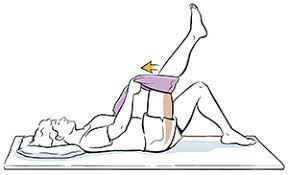
- You are lying flat on either the ground & a mat with the legs fully stretched out.
- For to stretch the right leg & bend the right leg.
- Then place the strap across the ball of the right foot.
- Hold this strap in both hands.
- Must keep the left leg extended on the ground with the foot flexed.
- This position pushes the thigh & calf toward the floor.
- Try to slowly extend the right leg with the foot flexed.
- The right leg is straight with a slight bend in the knee joint & the bottom of the foot which is face the ceiling.
- Then Gently pull the strap till the feel a slight tension in the hamstrings muscle.
- Hold the stretching position for 30 seconds.
- Perform this stretching 3 times in 1 session & 3 sessions per day.
Lying hamstring stretch using a wall:
- First, find an open doorway.
- You are lying flat on either the ground & a mat, with the back flat or the left leg fully extended on the floor.
- The left leg is pass through the doorway.
- Try to lean the right leg against the wall next to the doorway.
- Must be adjusted the distance between the body & the wall to achieve mild tension in the right leg.
- Hold the stretching position for 30 seconds.
- Perform this stretching 3 times in 1 session & 3 sessions per day.
Sitting hamstring stretch:
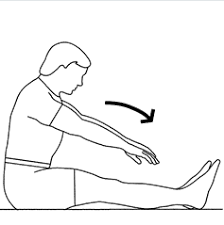
- To stretch the right leg, you sit on the ground with the left leg bent at the knee joint with the foot facing inward.
- This position is called the butterfly position.
- Try to extend the right leg & must be keeping it slightly bent at the knee joint.
- Then Bend forward at the waist but make sure to keep the back straight.
- Hold this stretching position for 30 seconds.
- Perform this stretching 3 times in 1 session & 3 sessions per day.
Sitting hamstring stretch using a chair:
- You are sitting with the back straight near the edge of the chair.
- Must keep the feet flat on the floor.
- To stretch the right leg, straighten the leg with the heel on the floor & the toes pointing toward the ceiling.
- Try to bend forward at the hip joint.
- Then place the hands on the left leg for support.
- Must be sure the spine is in a neutral position.
- Hold this stretching position for 30 seconds.
- Perform this stretching 3 times in 1 session & 3 sessions per day.
Standing hamstring stretch:
- You are standing upright with the spine in a neutral position.
- Place the right leg in front of the body with the foot flexed.
- The heel pushed into the ground & the toe pointing toward the ceiling.
- Then slightly bend the left knee.
- Try to gently lean forward & place the hands on the straight right leg.
- Must keep a neutral spine.
- Hold this stretching position for 30 seconds.
- Perform this stretching 3 times in 1 session & 3 sessions per day.
Standing hamstring stretch using a table:
- First, find a table that is just shorter than hip height.
- You are standing upright with the spine in a neutral position.
- Place the right leg on the table with the foot flexed so that the toes point toward the ceiling.
- Try to stand far enough away from the table so that only the foot & part of the calf rest on the table.
- Bend forward at the waist till there is a stretch in the hamstring muscle.
- To increase the intensity of the stretch, bend forward slightly & placing the hands on the leg or the table for support.
- Hold this stretching position for 30 seconds.
- Perform this stretching 3 times in 1 session & 3 sessions per day.
Towel hamstring stretch:
With the use of a towel in hand & a comfortable place to stretch:
- You are lying on the back & wrap a towel around the back of one thigh.
- To support the thigh by holding each end of the towel.
- If a towel is not available then the hands are used to hold the thigh.
- Must keep the other leg flat on the floor.
- Try to slowly straighten the knee joint till a stretch is felt in the back of the thigh.
- Must be trying to get the bottom of the foot parallel with the ceiling.
- Then extend the leg & straighten the knee joint only till the stretch is comfortable.
- Hold this stretching position for 30 seconds.
- Perform this stretching 3 times in 1 session & 3 sessions per day.
Wall hamstring stretch:
This stretching exercise is performed at the corner of a wall & near a couch:
- Must keep one leg on the floor.
- Then place the other leg against a wall & arm of a couch.
- Try to gently push the knee joint so that the raised leg is as straight as tolerable.
- Hold this stretching position for 10 seconds & gradually work up to 30 seconds.
- Perform this stretching 3 times in 1 session & 3 sessions per day.
Hamstring stretch on the edge of a bed:
For this stretching exercise, you sit on the edge of a bed.
- You are lying one leg along the edge of the bed & the other leg is placed down with the foot resting on the floor.
- Bend forward at the hip, keeping the spine straight.
- Try to keep the leg on the bed as straight as possible without pain.
- Hold this stretching position for 30 seconds.
- Perform this stretching 3 times in 1 session & 3 sessions per day.
Hurdler Hamstring Stretch:
This hurdler hamstring stretching exercise is a simple exercise that can be done right on the floor.
- You are sitting on the floor with one leg out straight.
- Try to bend the other leg at the knee joint & position the sole against your opposite inner thigh.
- Then extend your arms & reach forward over the straight leg by bending at the waist as you feel comfortable.
- Hold this stretching position for 30 seconds.
- Perform this stretching 3 times in 1 session & 3 sessions per day.
Standing Forward Bend:
This standing forward bend stretch is an easy hamstring stretch that is allowed to gravity to help deepen the stretch.
When your low back is sore, proceed with caution & choose a different stretch.
- You are standing up straight with your arms overhead.
- Fold forward from the hip joint & reaching your hands toward the floor.
- Your hip joint should be stacked over your ankle joint.
- Trying to touch your toes is not the goal of this stretch.
- Bending your knees as far as you can ( you must be ever-so-slightly bent, but don’t bend to go lower, because in this position your hamstring muscle is not the stretch).
- Try to engage your quads to deepen the stretch of the hamstring muscle.
- Hold this stretching position for 30 seconds.
- Perform this stretching 3 times in 1 session & 3 sessions per day.
Strengthening Exercises:
After the follow of Electrotherapy & massage for 2 -3 days to release Neck muscle pain by the physiotherapist then the therapist is advised to you do strengthening exercises for Neck muscle weakness.
This strengthening exercise is always advised when you feel to release pain & when you feel comfortable.
This all strengthening exercise helps to you muscle weakness & pain.
- Downward Dog
- Extended Triangle Pose
- Foam roll hamstrings
- Isometric hamstring exercises
- Standing knee flexion
- Hamstring catches
- Bridge exercises
- Seated hamstring curl
- Single leg hip extensions
- Single leg ball pick up
- Lunge with ball
- Good mornings
- Norwegian leg curl
- Sumo squat
- Kettlebell Swing
- Single-Leg Deadlift
- Single-Leg Deadlift
- Leg press on a ball
- Reverse Plank
- 5-Minute Daily Plank Workout
Downward Dog:

- Start this exercise on the floor on your hands & knee joints.
- Then lift your knee joint & send your tailbone toward the ceiling.
- Then straighten your legs slowly.
- When your hamstrings muscle is tight then this poses a difficulty, so you must keep your knee joint bent slightly.
- Make sure to keep a straight spine.
- Then take a few deep breaths & hold for however long your instructor directs you to.
- Hold this exercise position for 10 seconds.
- Perform this exercise 10 times in 1 session & 3 sessions per day.
Extended Triangle Pose:
- Start this exercise in a standing position.
- Try to move your legs about 3 to 4 feet apart.
- Then reach your arms out parallel to the ground with your palms facing down.
- Try to turn your right foot in toward the left & your left foot out 90 degrees.
- Must keep your heels in line with one another.
- Try to slowly bend your torso over your left leg & reach your left hand to the floor & a yoga block for support.
- Then stretch your right arm toward the ceiling.
- Hold this exercise position for 10 seconds.
- Perform this exercise 10 times in 1 session & 3 sessions per day.
Foam roll hamstrings:

Foam roller exercise helps to stretch out & loosen your muscles.
- You are sitting on the floor with your foam roller under your right thigh.
- For support place your left leg on the ground.
- With the help of your arms behind you, roll your hamstring muscle, the entire back of your thigh, from the bottom of your buttocks to your knee joint.
- During this exercise, you must focus on your abdominal muscles.
- Must keep your core muscle engaged & your back straight.
- Continue slowly rolling on the foam roller for 30 seconds to 2 minutes total.
- Perform this exercise 10 times in 1 session & 3 sessions per day.
Solmetric hamstring exercises:
- These exercises work the hamstring muscles statically mean without movement, it is important to do this exercise at varying amounts of flexion (knee bend).
- You are lying on your front in the prone position.
- The therapist provides resistance as you contract the hamstring muscles,
- Hold this exercise for 10 seconds then relax.
- Then Change the amount your knee joint is bent to work the muscle at different lengths.
- Once you have worked hard the muscles through a range of angles then repeat with your foot turned outwards.
- Try to again with your foot turned inwards.
- This exercise targets the inner & outer hamstring muscles as well.
- Hold this exercise position for 10 seconds.
- Perform this exercise 10 times in 1 session & 3 sessions per day.
Standing knee flexion:
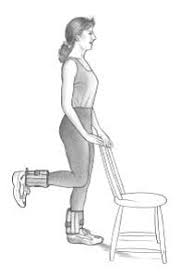
- You are standing on one leg & bend the other one using just gravity as resistance.
- Start this exercise gently & slowly to start with as an early-stage exercise.
- Aim of this exercise for 3 sets of 10 repetitions once a day & building to 4 sets of 20 reps.
- When apply to ankle weights which are used to increase the load further.
Hamstring catches:
- Must stay relaxed as your leg falls under the influence of gravity.
- To contract the hamstring muscles so that prevent the foot from landing.
- This starts to work with hamstring muscles eccentrically & with a very light dynamic training effect.
- Then again begin with 1 set of 10 reps & build up each day to 3 sets of 15 reps.
- Use the ankle weights to increase the load on the muscle if necessary.
- Remember this exercise is done pain-free both during or afterward as well as the next day.
In bridge exercises:
- You are lying on your back, knee joint bent.
- Push the hip joint upwards to work with the gluteal muscles & hamstrings.
- Try to use both feet on the floor pushing up & to begin with.
- Hold this position briefly & lower.
- Start with 3 sets of 8 reps building to 3 sets of 12 reps.
- Progress the exercise with single-leg bridges.
- Single leg bridges are done in the same way to ensure you squeeze the gluteal muscles.
- Aim to maintain a straight line from the shoulder joint on the ground to the knee at the top point of the exercise.
- Again, start with 3 x 8 reps &build up.
Seated hamstring curl:
It is a deceptively difficult exercise that works the hamstring muscles specifically in a very contracted close range of movement – ROM.
- The first end of a resistance band is tied to a fixed point.
- It is held by a therapist & the other end is secured to the foot.
- Try to pull your heel into the buttocks.
- Hold this exercise position for 10 seconds.
- Perform this exercise 10 times in 1 session & 3 sessions per day.
Single leg hip extensions:
This exercise is a more advanced version of a bridge exercise.
- Use a step or box to raise your elbow joint & alternate putting each heel to the floor.
- During exercise important to maintain good core stability & must keep your hips and shoulders still.
- Your heel touches the ground the gluteal muscles & hamstrings muscle to work isometrically & keep your body stable.
- Hold this exercise position for 10 seconds.
- Perform this exercise 10 times in 1 session & 3 sessions per day.
Single leg ball picks up:
This is another deceptively difficult hamstring exercise that looks easy at first glance.
- This Single leg ball pick-up exercise works the hamstring muscles in a very stretched position & particularly the muscle fibers nearer the buttocks.
- Then place one foot in front of the other & bend down to pick up the medicine ball.
- Repeat this movement to put the ball back down.
- Hold this exercise position for 10 seconds.
- Perform this exercise 10 times in 1 session & 3 sessions per day.
Lunge with a ball:
- A basic lunge is performed while holding a ball to aid balance.
- This exercise is used to strengthen the glutes, hamstring muscles & quadriceps muscles.
- You are standing position with your injured leg in a wide stance in front of the other.
- Try to hold a medicine ball close to your chest.
- Then drop down moving your weight onto your front leg while dropping the back knee to the floor.
- Hold this exercise position for 10 seconds.
- Perform this exercise 10 times in 1 session & 3 sessions per day.
Good mornings:
- This exercise is a more advanced version of the single-leg ball pick up & works the lower back or hamstring muscles eccentrically, mostly the fibers towards the top of the thigh.
- First, take to single-leg ball pick-up exercise position.
- Then bend forward at the waist & keeping your back straight.
- Hold this exercise position for 10 seconds.
- Perform this exercise 10 times in 1 session & 3 sessions per day.
Norwegian leg curl:
It is One of the most advanced hamstring exercises but Does not do this exercise before trying to sprint!
- First, kneel while a therapist holds your ankles.
- Then slowly lean forwards as you can under control use the hamstrings muscle to resist the forward’s movement.
- For the super-advanced version of this = use the hamstrings muscle to curl back up again.
Sumo Squat:
- You are standing with feet slightly wider than hip-width.
- Maintain point your toes about 45 degrees outward & Your hip joint rotated outward.
- Try to put your arms out in front of you at shoulder joint height.
- If you want to use a weight so that hold the dumbbells securely at the shoulder joint & in a goblet position in front of your chest.
- Then Take a deep breath, engage your core muscle & push your hip joint back & lowering into a squat position.
- Stop at the bottom, exhale & press back into a standing position.
- Must keep weight evenly distributed in heel & midfoot.
- Do the 12 to 15 reps.
Kettlebell Swing:
- First, place the kettlebell slightly in front of you & hold onto the handles.
- Must keep your shoulders back &down.
- You are standing with feet slightly wider than hip distance & your toes angled out slightly.
- Must be keeping a straight spine with your shoulders back.
- Bend your knee joint slightly & send your hips back or tip your torso forward as you pick up the kettlebell with both hands.
- This position is not a squat.
- It is a hip hinge, so avoid bending the knee joint significantly.
- Try to hold the kettlebell & roll your shoulder joint back or engage your core muscle & begin the movement by squeezing the glutes & hamstrings muscle to fully extend your hips as you reverse the hip hinge.
- Then swing the kettlebell up in front of your chest.
- Must keep your body weight toward your heels.
- Try to lower the kettlebell & swing through your legs to repeat.
- Do the 15 to 20 repetitions & perform for a specified time.
- Make sure you are doing a hip hinge & not a squat.
- The hinge movement is what allows you to target the hamstrings & glutes muscles.
Single-Leg Deadlift:
- You are standing on the right leg with a soft knee joint bend.
- Hold a kettlebell in your right hand & The left foot will be off the floor.
- Must tip your body forward by hinging at the hip joint & move the weight toward the ground.
- Must keep your chest up & your left leg go straight back behind you.
- Go as far as you can till you feel the tension in the right hamstring.
- You stand back up straight & squeeze your glutes muscle & return to the starting position.
- Complete all reps on the right leg before changing to the left leg.
- Do the 8 to 10 repetitions on each leg.
Lying Leg Curl:
- First adjust the roller pad, so that it rests above the heels.
- You are lying down on your stomach with the roller pad resting on top of your lower calves.
- Just make sure your legs are fully stretched.
- Then Grasp the handles on either side of the machine.
- Try to lift your feet while keeping your hips on the bench & flex your knee joint or pull your ankles towards your glutes muscle.
- Stop for a few seconds, then slowly lower your leg to the starting position.
- Do the 10 to 15 repetitions.
- You are choosing a weight light enough to maintain strict form.
- If your hip joint is coming off the bench while curling & decrease the weight.
Leg Press on the Ball:
- You are sitting on a large exercise ball.
- Walk your feet out till your body is at an incline on the ball.
- Your head & shoulder joint is off the ball.
- Must keep your neck natural & avoid looking up or down.
- Place your arms at your sides.
- Try to bend your knee joint like you are doing a squat.
- Then, press through the heels & return to the starting position but must be focussing on contracting the hamstring muscle.
- Do the 10 to 15 repetitions.
- Must keep your weight in the heels rather than the toes.
Reverse Plank:
- First, place an exercise mat on the floor.
- You are sitting down with your legs extended in front of you.
- Try to put your hands slightly behind you & palms down or fingers spread wide.
- The hand is placed outside of your hip joint but in line with your shoulder joint.
- Then press into your hands and lift your hips & upper body toward the ceiling.
- The body is in a straight line from your head to heels.
- Your Look up toward the ceiling.
- Then contract your core, glutes & hamstrings muscle.
- Hold this exercise position for 15 to 30 seconds & lower to the starting position.
- Do the 5 to 10 repetitions.
- For to increase the tension on the hamstring muscle add a toe tap.
- Try to bend your right knee joint & bring your toe towards the glutes.
- Then do a toe tap & extend your leg or change to the left leg.
- Then repeat this exercise.
5-Minute Daily Plank Workout:
- You are standing with feet a little wider than shoulder-width apart.
- When you want to use the weight hold a dumbbell in each hand.
- Must keep your arms at your sides & hold in a goblet squat position.
- Then Engage your core muscle & slowly bend your legs or squat down till your thighs are parallel to the floor.
- For with your body weight only raise your arms in front as you squat down position.
- Must keep your head up & look straight ahead.
- Hold this bottom position for a few seconds, then exhale.
- Push through the heels & return to the starting position.
- Do 12 to 15 reps.
How to prevent hamstring muscle soreness?
Some points which are helpful to you prevent the formation of hamstring soreness :
- Warm-up:
- It is best for muscles before exercise better than stretching.
- This warm-up exercise is waking up the muscles by increasing blood flow to them.
- To warm up, you choose the light versions of certain exercises.
- You are also included to slow jogging & biking, and jumping rope with lifting light weights.
- Drink water:
- Water helps you control the body temperature, loosen the joints & transport nutrients which is create energy in the body.
- Without water, your body is struggling to perform this workout exercise at its highest level.
- Without water, You also feel fatigued, have muscle cramps, dizziness & more serious symptoms.
- Limited rest:
- Always wait 48 hours before working for the same muscle groups in the same way.
- So that do the limited & lighter exercise of the same muscles helps.
- Use proper technique:
- Always Do the exercises in the right way which is help to protect the muscle from strain or injury.
- when you go to the gym & health club for a workout, ask a trainer & instructor who is helping you in the exercise.
- So that trainer shows the proper way to lift the weights & use the machines or equipment.
- Cool-down:
- It is important to stretch after the workout.
- Muscles become too relaxed & more flexible when you do the warm.
- Stretching helps you circulate the blood away from the muscles & back to the heart for recovery.

